Researchers discover boat filled with ‘modified’ human bones used for mysterious ceremonies hundreds of years ago
A grisly 45-foot shipwreck has been dredged from the mud of a drought-stricken lake in Mexico — along with a “one-of-a-kind” set of manipulated human bones.
Archaeologists have identified the ship as a traditional vessel known as a tepari. It is believed that the ship predates the arrival of the Spanish conquistadors by several centuries. However, the age of this particular wreck remains uncertain.
The ship appears to have sunk with its cargo, mainly firewood, which experts suspected was being transported from Erongaricuaro to Janitzio Island. four miles to the west.
Each of the mysterious and remarkably well-preserved bones found at this shipwreck, mostly femurs, bore multiple deep grooves.
According to a Spanish-language publication, the bones could provide valuable insights into the “ritual practices of the ancient civilizations that lived in the region.”
The grisly shipwreck of a 45-foot-long vessel has been dredged from the mud of a drought-stricken lake in Mexico — with a “one-of-a-kind” set of manipulated human bones (above). Each of the well-preserved bones, mostly thigh bones, were striated with multiple deep grooves
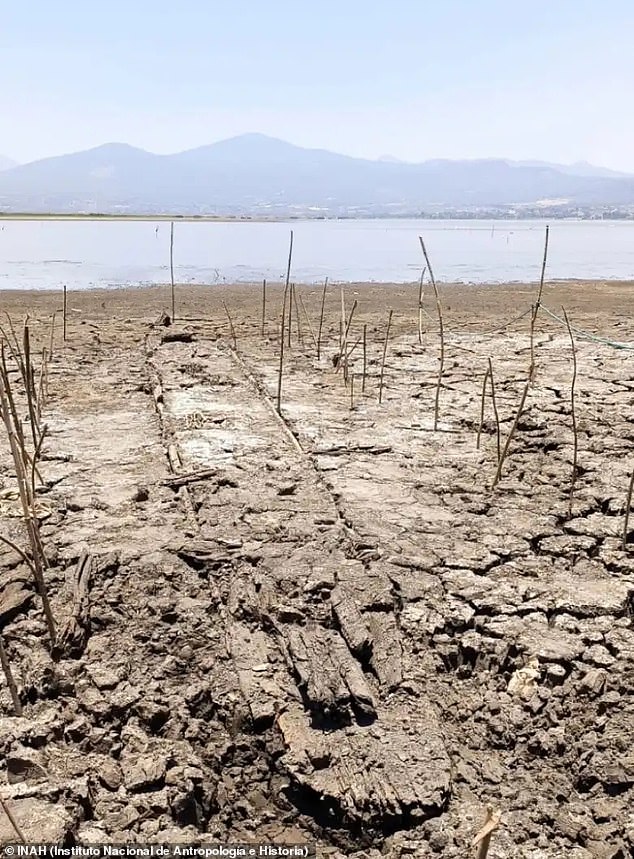
Archaeologists have identified the ship as a traditional ‘tepari’, which predates the arrival of the Spanish conquistadors by several centuries, although the age of this particular wreck remains uncertain. The ship (above) appears to have sunk with its cargo, mainly firewood
‘Numerous ceramic and stone objects have also been found, believed to have been thrown into the lake as offerings in pre-Hispanic times,’ the same magazine said. The Green Bridgelocated on the other side of the Atlantic Ocean in the Spanish city of Oviedo.
The discovery was first reported by an excavation and conservation team from Mexico’s official National Institute of Anthropology and History (INAH) (the abbreviation for the organization’s Spanish name, Instituto Nacional de Antropología e Historia).
According to INAH officials, the bones bear nearly a dozen “ranurados,” grooved or slit marks, macabre engravings whose purpose is currently unknown.
José Luis Punzo, director of the excavation project at INAH, agreed with the institute’s assessment that the bones were “unique” because of their good preservation.
But the researcher focused primarily on the other artifacts found in the wreck.
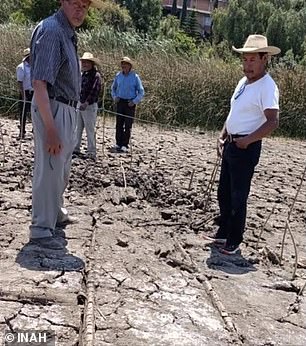
Excavators in the drying lakebed of Mexico’s Lake Patzcuaro investigate the half-buried ‘tepari’ shipwreck (above)
“Among them were also found several complete ceramic pieces, such as decorated bowls, pots and incense burners,” said Punzo. “These are examples of the rituals that undoubtedly took place in the lagoon.”
“Deer antlers, bone needles and other stone objects have also been found,” the INAH official said. Newsweek.
“Thanks to these studies,” he said, “we can gain a deeper understanding of the relationship of the ancient inhabitants of this site with the lake.”
Punzo noted that the actual age of the excavated tepari boat remains “difficult” to determine, even roughly by century.
He believed that the boat could be older than the period when Mexico was occupied by Spain 500 years ago, or that it could be a more recent sculpture from a more modern period.
According to Punzo, INAH experts will conduct further analyses on the boat to determine more precisely when it was made and what its historical value is.
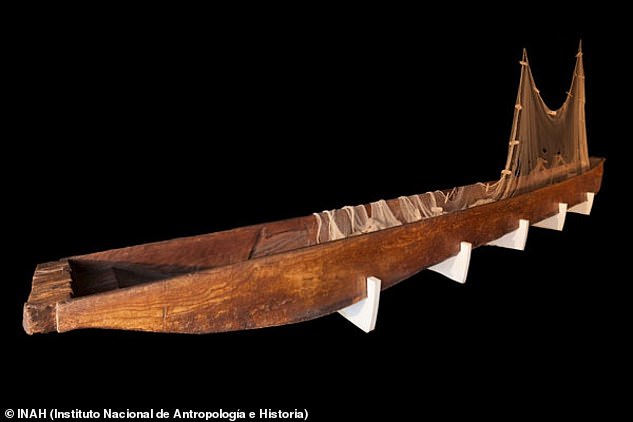
José Luis Punzo, who is leading efforts to recover and preserve the artifacts, pointed out that despite their impressive length, these tepari boats are “monohulls — that is, they are made from a single large tree and carved from it.”
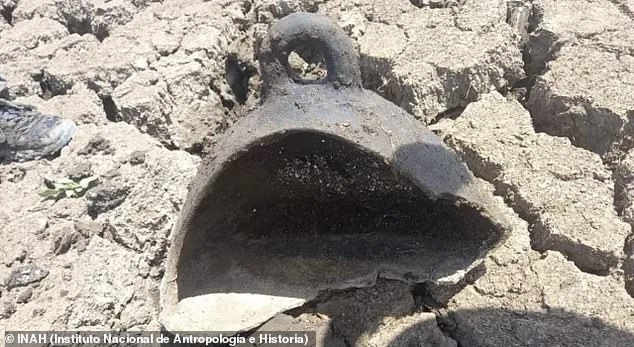
“Numerous ceramic and stone objects have also been found that are believed to have been thrown into the lake as offerings in pre-Hispanic times,” according to a publication that covered the find, the magazine La Brújula Verde, based across the Atlantic in the Spanish city of Oviedo.
According to research by the University of Patzcuaro, Lake Patzcuaro, where these artifacts were discovered, has lost an estimated 50 percent of its normal volume in recent years. CNN affiliate Televisa.
Both “environmental factors” such as drought, exacerbated by climate change, and “illegal water extraction” have contributed to the losses, representatives of the Pátzcuaro city council told the news channel.
As Arturo Pimentel, owner of a local hotel, noted, the cutting down of trees to make way for avocado orchards has also disrupted the natural flow and retention of water in the lake.
“The avocado has become a plague in the region,” Pimentel told the Canadian public broadcaster CBC.
These conditions have turned the island of Janitzio in the lake, famous for its ‘Day of the Dead’ celebrations, into a peninsula, the Mexican news site reported N+.
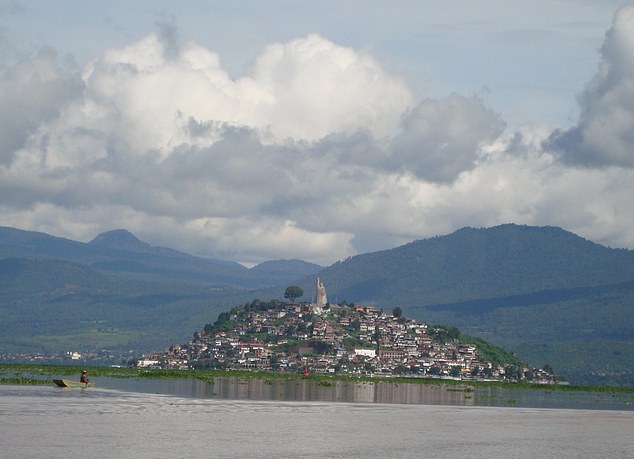
Droughts accelerated by climate change and illegal water theft have helped transform the lake’s Janitzio Island (above) into a peninsula
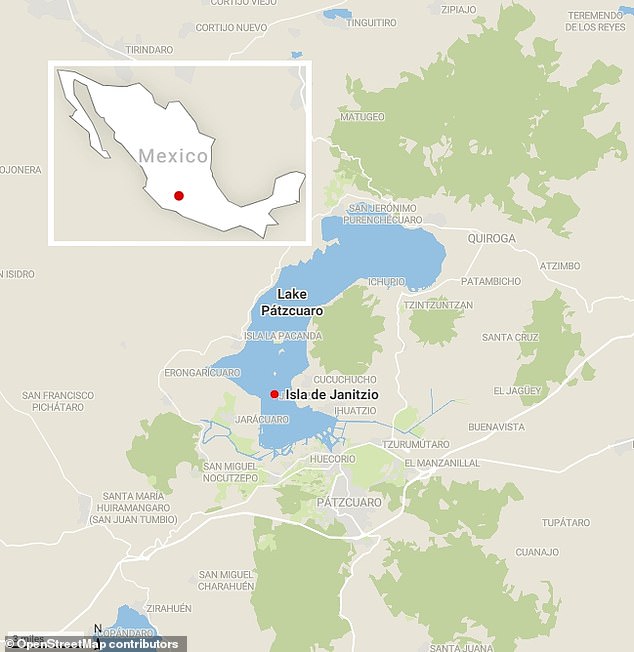
A map of Mexico’s Lake Patzcuaro – where the shipwreck and ritual bones were discovered
Officials from the Mexican government’s anthropology institute said they hope to make the best of the lake’s tragic state by safeguarding these historic cultural finds.
‘At the moment, together with the community of Janitzio, conservation work is being carried out on the movable archaeological material,’ INAH said in a statement, “as well as other tepari that have been identified.”
While INAH did not release photos or details about these additional shipwrecks, the institute did indicate that it plans to preserve these artifacts for “a community museum on Janitzio Island.”
INAH Project Director Punzo pointed out that despite their impressive length, these tepari boats ‘are monohull boats – that is, they are made from one large tree and carved from it.’
The canoe-like boats are carved with an axe-like tool, an adze, which leaves distinctive markings in the wood of the tepari.
Tepari are traditionally made waterproof by sealing them with chapopote, a natural mixture of crude petroleum that gives the boats their dark color.
The boats could often carry up to 20 people, with the crew manning a large net during fishing trips.
However, according to the National Anthropological Museum of INAH, deforestation has left few tree trunks locally available for traditional tepari carving by Mexico’s indigenous people.
But the craftsmanship required to make a tepari was once so prized that this local respect is reflected in the name itself.
The word is an adjective in the Purépecha language of the Mexican region of Michoacán which is used to indicate ‘something very great, admirable and important’.
